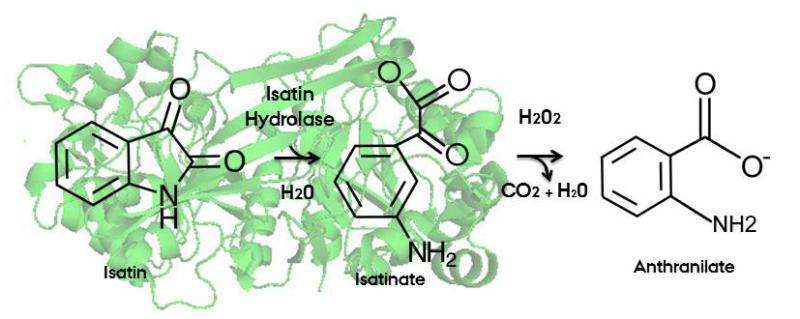Method for determining possible stress marker in blood samples

A research collaboration between the universities of Oslo and Aarhus has resulted in the development of a new method with diagnostic potential. The new method that combines phase extraction with an enzymatic reaction may eventually be used for an improved and faster screening analysis of isatin as a potential indicator of stress and neurological disorders.
Isatin is a small organic molecule found in low concentrations in different tissues and is excreted with the urine via the blood stream. Isatin is supposedly a degradation product from the neurotransmitters, e.g. dopamine and serotonine.
The level of isatin is elevated in patients suffering from stress and in patients suffering from Parkinson's disease. The level of isatin is also elevated among pregnant women.
Isatin is an inhibitor of monoamine oxidase B, an enzyme that catalyses the initial degradation of dopamine and serotonine. This inhibitory effect makes isatin act as an antidepressant, and it relieves the symptoms of patients suffering from Parkinson's.
Collaborators from the University of Oslo are the prime mover in the development of this highly specific method to determine the concentration of isatin in samples of blood and urine, using the bacterial enzyme isatin hydrolase in combination with a two-phase extraction. Isatin hydrolase catalyses the conversion of isatin into isatinate, which is followed by a chemical conversion of isatinate into the fluorescent compound anthranilate.
The method can be refined further by substituting the chemical step by an enzyme that is able to convert isatinate into anthranilate.
Within several bacterial species, isatin is formed via the degradation of indole 3-acetic acid, but the origin of isatin in humans are not known. The researchers' method to detect isatin might be useful in future experiments to establish the source-tissue and precursors for isatin formation.
More information: Enzymatic Detection and Quantification Assay of Isatin, a Putative Stress Biomarker in Blood, pubs.acs.org/doi/ipdf/10.1021/cn500346x




















